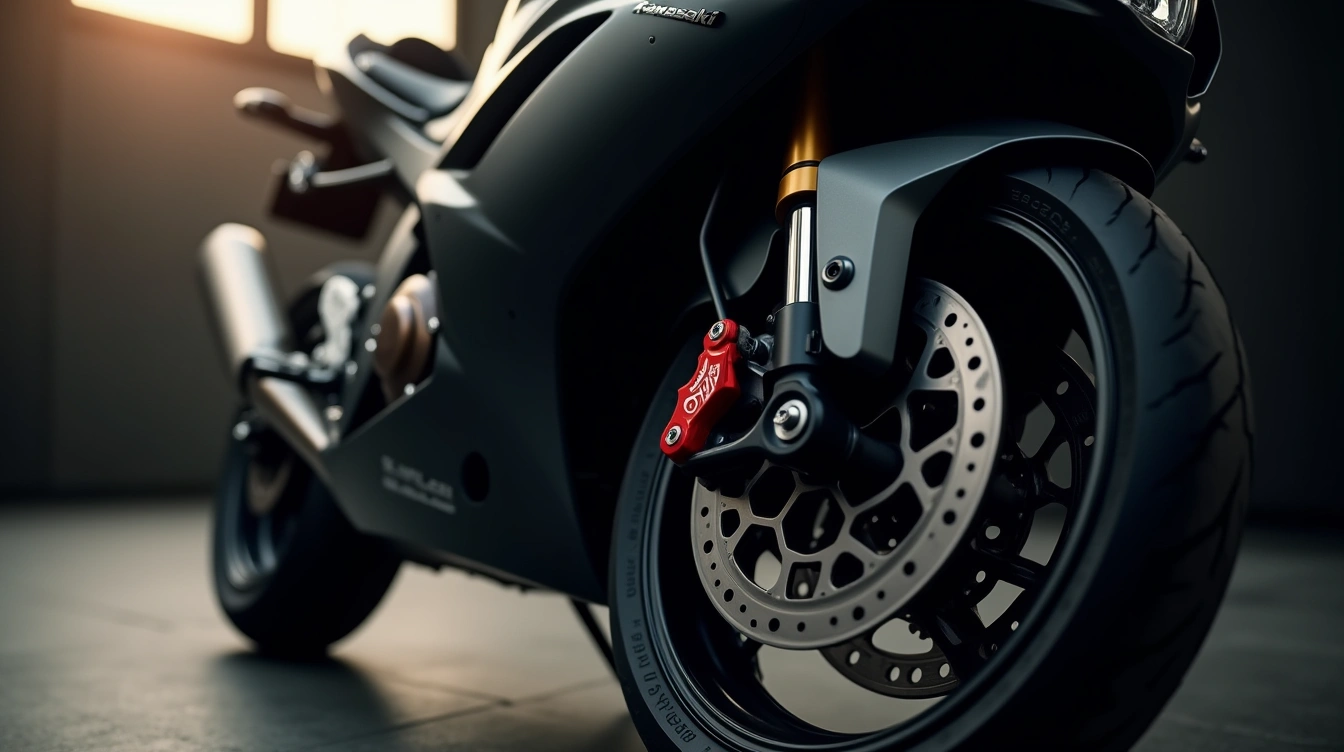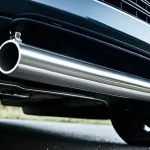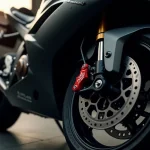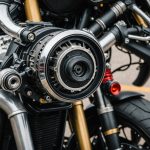Optimising Your Kawasaki ZX-10R’s ABS for Maximum Safety
Boosting Kawasaki ZX-10R ABS safety starts with understanding the critical role of ABS calibration. Proper calibration ensures the Anti-lock Braking System reacts swiftly to avoid wheel lock-up, maximizing control during hard braking or slippery conditions. Neglecting this can lead to reduced effectiveness, putting rider safety at risk.
Advanced ABS tips recommend checking the sensor alignment and wheel speed signals, as these affect how the system modulates brake pressure. Fine-tuning these settings can improve overall bike handling by allowing smoother deceleration and enhanced traction. Riders often find that slight adjustments translate into noticeable confidence on varied road surfaces.
Also to read : Ultimate guide to installing aftermarket fog lights on your yamaha tracer 900: expert insights and techniques
Before adjusting your ABS, follow an essential checklist: verify tire pressure is within manufacturer recommendations, inspect brake fluid levels and quality, and ensure no dirt or debris obstructs wheel sensors. Also, test the system response under controlled conditions to confirm settings are optimized. Remember, ABS system optimization isn’t just about raw performance but a balance that prioritizes safety while maintaining Kawasaki ZX-10R’s dynamic handling.
Essential ABS Maintenance for Peak Performance
Maintaining the ABS system of your Kawasaki ZX-10R is crucial for both safety and optimal ride performance. Regular inspection and cleaning of ABS sensors help prevent dirt or debris from impairing their function. Sensors can accumulate grime from road conditions, reducing their ability to accurately detect wheel speed changes. This step ensures the system’s responsiveness remains reliable in emergencies.
Also to discover : Ultimate guide: how to replace the air temperature sensor on your triumph street triple – a step-by-step walkthrough
Monitoring the brake fluid quality is equally important. Brake fluid absorbs moisture over time, which can degrade braking efficiency and harm ABS components. Kawasaki ZX-10R routine maintenance typically recommends brake fluid replacement every one to two years, but frequent checks can ensure fluid remains clear and at the proper level. Using the manufacturer-recommended fluid type protects system longevity.
Additionally, ABS wiring must be regularly checked for integrity. Frayed or loose wires can cause error codes, triggering the system to malfunction or disable. Scanning for error codes with diagnostic tools allows for timely troubleshooting. Addressing these maintenance tasks diligently keeps the ABS in top condition and enhances rider confidence on every ride.
Adjusting ABS Settings for Different Riding Scenarios
Adjusting ABS settings is crucial for riders aiming to optimize their ZX-10R performance tuning across various conditions. The bike’s factory ABS setting provides a reliable baseline for everyday road use, offering stable braking confidence on wet or uneven surfaces. However, switching to custom ABS modes can dramatically enhance control, particularly on the track. For example, reducing ABS intervention allows for more aggressive braking, ideal during high-speed corner entries, while still preventing wheel lock.
Integration with other rider aids such as KTRC (Kawasaki Traction Control) and Power Modes further refines braking dynamics. This synergy lets riders tailor the bike’s responsiveness, balancing traction and power delivery with brake feel. Adjusting ABS in conjunction with these systems enhances overall stability and cornering precision.
It is important to recalibrate or reset ABS periodically, especially after changes in tire size or suspension setup, to maintain accuracy. Misaligned systems may lead to inconsistent braking performance. Regular calibration ensures the ZX-10R’s EOS (Electronic Optimization System) operates at peak efficiency, matching the demands of diverse riding scenarios.
Real-World Use: Adapting ABS to Riding Styles
Understanding ABS riding techniques is crucial for both sport riders and everyday commuters. For sport riding, ABS systems are often calibrated to allow more aggressive braking without locking wheels, supporting rapid deceleration while maintaining control. This tailoring means riders can push their bikes closer to limits with confidence, utilizing ABS to prevent skidding in high-speed scenarios.
On the other hand, everyday riders benefit from ABS settings optimized for smooth and safe braking in typical traffic conditions. The system intervenes earlier to ensure wheel stability, which enhances safety during sudden stops or on slippery roads. Adapting your braking style to engage ABS effectively involves applying firm, consistent pressure rather than abrupt or pumping actions. This helps ABS respond as intended, providing maximum stopping power while avoiding skidding.
A key part of mastering ABS is preventing unwanted intervention—such as unnecessary activation on uneven or loose surfaces. Riders can minimize this by modulating brake pressure and being aware of road conditions. Tailored ABS systems combined with proper braking technique lead to safer, more controlled rides across diverse scenarios.
Troubleshooting Common ABS Issues
Understanding ABS troubleshooting starts with recognizing warning signs on your motorcycle’s dashboard. If an ABS warning light illuminates, it typically signals a fault in the anti-lock braking system. One common cause is sensor malfunction, often picked up as ZX-10R error codes. These error codes provide specific information about what triggered the warning, allowing targeted diagnostics.
Inconsistent ABS performance problems, such as unexpected activation or failure to engage during braking, can stem from dirt or damage to wheel speed sensors. Regular inspection and cleaning of these sensors can prevent many issues. If the ABS engages erratically, it could also indicate hydraulic problems or electrical faults requiring detailed testing.
When troubleshooting, always refer to the owner’s manual for ZX-10R error codes and recommended responses. The manual guides you through interpreting error messages and basic resets. However, for complex ABS issues or persistent warning lights, consulting a professional mechanic is advisable to ensure safety and proper function. These steps ensure effective resolution of ABS faults and help maintain optimal braking performance.
Advanced Expert Insights for High-Performance Riders
Mastering expert ABS advice is pivotal for riders aiming to push limits efficiently and safely, particularly in track day environments. Kawasaki professionals underscore the importance of familiarizing yourself with the bike’s ABS calibration before hitting the circuit. Adjusting ABS sensitivity can significantly influence braking performance during high-speed maneuvers, so always consult Kawasaki technical bulletins for model-specific recommendations.
Track day tips also include gradual testing of ABS thresholds under controlled conditions. Riders should incrementally explore the limits of their system rather than relying solely on factory presets, which might not suit aggressive or technical riding styles. Listening to expert ABS advice, especially from seasoned Kawasaki technicians, reduces risks of unexpected traction loss or wheel lock-up.
Regarding aftermarket ABS upgrades, professionals recommend approaching these modifications with caution. While certain enhancements offer improved modulation or reduced weight, improper installation or using incompatible components can compromise system integrity. Adhering closely to professional Kawasaki recommendations ensures any ABS upgrade preserves safety and performance. This nuanced approach aligns with best practices shared by experts and track pros alike, maximizing both confidence and capability on race days.
Integrating ABS with Overall Rider Safety Measures
Integrating ABS with overall rider safety strategies is essential for proactive motorcycling. While ABS greatly enhances brake control by preventing wheel lock-up, it should be combined with proper protective gear such as helmets, gloves, and jackets. These physical safeguards work alongside ABS to reduce injury risk in emergencies.
Supplementing ABS with additional electronic rider aids—like traction control and electronic stability programs—further improves safety. These systems assist riders by managing engine power and stability, especially on slippery or uneven surfaces. Importantly, understanding the limitations of ABS is critical: it cannot defy physics or road conditions, so riders must maintain alertness and avoid overreliance.
Rider responsibility remains key. Training on ABS functionality creates awareness of how to modulate brakes effectively despite technological assistance. Proactive motorcycling encourages combining technology with vigilance, good judgment, and comprehensive safety practices. In this integrated approach, ABS acts as a vital component, not a standalone solution.




